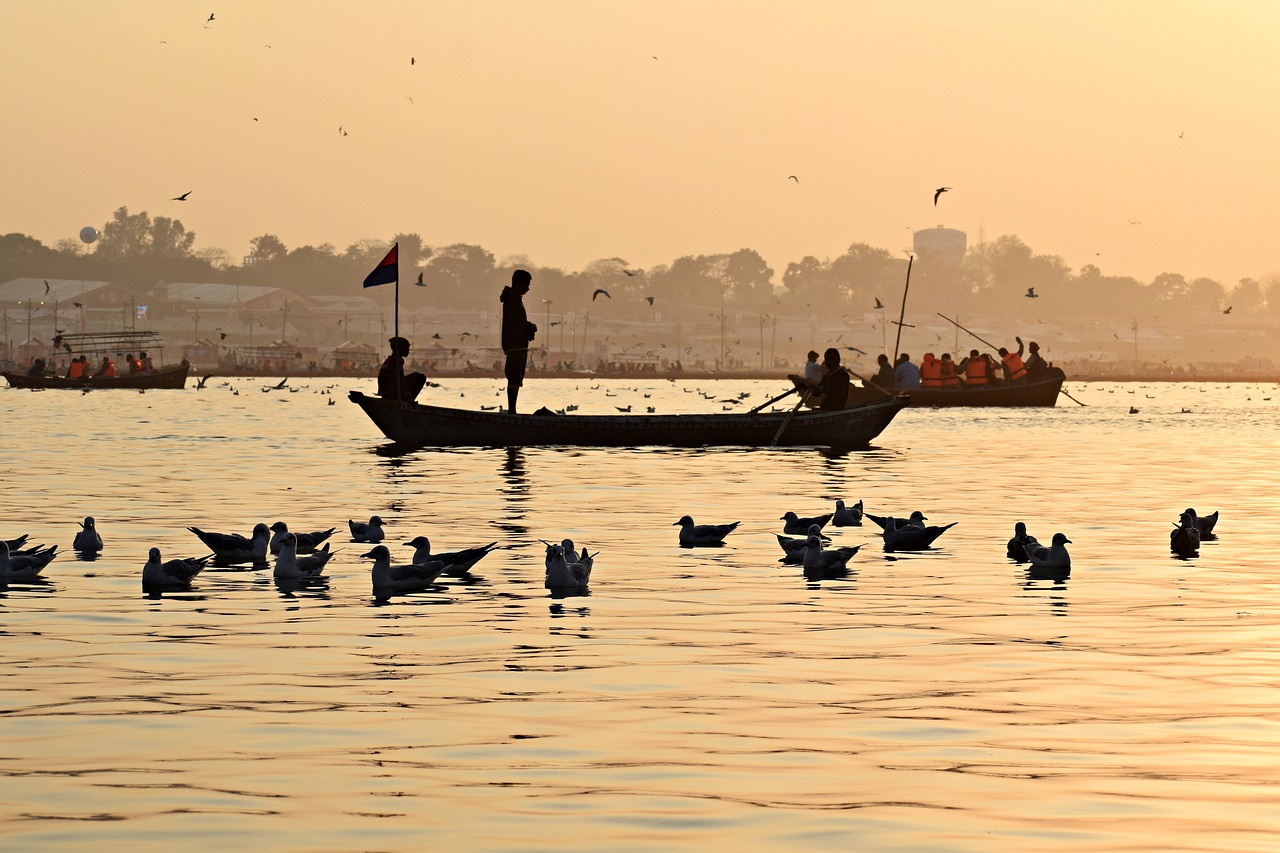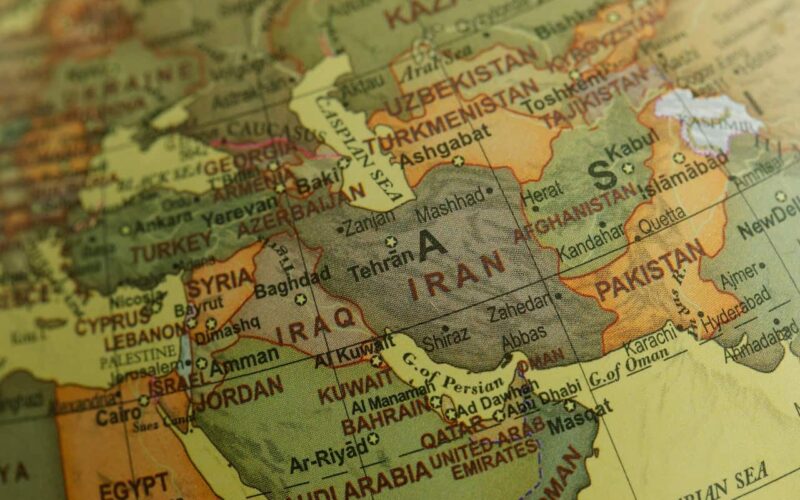Mysteries and Wonders of the Ganges River: Revealing Fascinating Facts and Environmental Concerns

The Ganges River, known as the Ganga in India, holds a significant place in the hearts of millions of people. Have you ever wondered why British sailors carried Ganges water with them? Or how the river maintains its clarity? In this article, we will reveal intriguing facts about the Ganges River that you may not have heard before.
Stretching from the Himalayas to the Bay of Bengal, the Ganges spans an impressive length of 2,413 kilometers. Its origin is at Gaumukh, also known as the “cow’s mouth,” located at the Gangotri glacier. This mighty river serves as a lifeline for 500 million people, catering to their water needs from Gangotri to Calcutta.
Embracing Struggle: The Pathway to Life’s Triumphs
The Gangotri glaciers, found at elevations ranging from 13,400 to 17,600 feet, are of great importance to the Ganges River. Unfortunately, these glaciers are rapidly shrinking due to the significant impact of global warming. The glacial level is decreasing by approximately 60 feet each year, and if current trends continue, many of these glaciers could vanish within the next 40 years. A comparison of images from the last century vividly depicts the dramatic changes in glacier levels.
Did you know that the Ganges River has over 100 names? This sacred river holds a special place in the hearts of people around the world, yet it is also known for being one of the most polluted rivers. Despite its pollution, the Ganges possesses an enigmatic quality regarding the purity of its water, which remains a subject of intrigue and fascination.
In the year 1800, British sailors were astounded by the Ganges water’s remarkable freshness during their journeys. They decided to take the Ganges water back to England, as the water from other rivers would deteriorate within weeks. For instance, even the Thames River in London would become contaminated shortly after leaving the city. The enduring freshness of the Ganges water has contributed to its reputation as a mysterious and alluring river.
India’s highest dam, the Tehri Dam, is constructed on the Ganges River. Additionally, 16 hydroelectric dams have been built, with 13 still under construction and another 54 proposed for the future. However, a significant concern arises from the lack of ecological flow planning for these dams, which could lead to large sections of the river drying up in the future. Consequently, the Ganges River’s structure and reach may undergo significant changes.
While the Ganges water remains relatively clean until Rishikesh, pollution becomes a serious issue downstream from this point. The contamination of the river worsens, particularly due to the Upper Ganges tributary. In Kanpur, located 850 kilometers from the glacier, the water is so polluted that residents avoid bathing in it. The city’s industries and factories release chemicals that severely taint the water, turning it almost black.
The Yamuna River, the largest tributary of the Ganges, runs parallel to the famous Taj Mahal in Agra. Over time, this once-pristine river has become highly polluted, resembling a garbage-filled pit as it flows from Delhi to Agra. Several smaller rivers, such as the Sahibi River in Delhi, have disappeared, transformed into drains filled with garbage and polluted water.
Beyond Kanpur, the Yamuna River joins the Ganges in Allahabad, known as the confluence of the Ganga, Yamuna, and Saraswati rivers. Here, the Ganges water takes center stage, attracting numerous visitors who come to bathe in its holy waters. The river continues its journey, passing through Varanasi, a city of great spiritual significance.
Approximately 500 million people in India reside along
the banks of the Ganges, and the river’s water irrigates one-third of the country’s land. Interestingly, the Ganges possesses a unique ability to cleanse itself faster than other rivers. This remarkable feature is not attributed to the water from the Himalayas but rather the elements present in its riverbed. These elements destroy harmful bacteria, ensuring the water remains relatively clear and safe.
However, the Ganges’ self-purification capacity is diminishing due to escalating pollution. We all share the responsibility to combat this growing issue. Numerous NGOs and government initiatives strive to keep the river clean and pristine.
Some Important Bullet Points for River Ganga
– The Ganges River extends from the Himalayas to the Bay of Bengal, spanning 2413 km in length.
– The source of the Ganga is the Gangotri glacier, known as Gaumukh, which means “cow’s mouth.”
– The Ganges provides water to 500 million people from Gangotri to Calcutta, meeting their water needs.
– The Gangotri glaciers are located at an elevation of 13,400 to 17,600 feet.
– National Geographic reports that the Gangotri glaciers are rapidly shrinking due to global warming, decreasing by about 60 feet annually.
– Some experts believe that most of these glaciers could disappear within 40 years.
– The Ganges River has more than 100 names and is considered the most sacred river in the world.
– Despite its sacred status, the Ganges is also one of the most polluted rivers globally.
– The river’s water is renowned for its purity, although the reasons for its cleanliness remain a mystery.
– In the year 1800, British sailors took Ganges water with them to England because it remained fresh throughout the journey, unlike water from other rivers that would deteriorate quickly.
– The Ganges River is home to India’s highest dam, the Tehri Dam, and several other hydroelectric dams.
– However, the lack of ecological flow planning for these dams poses a threat to the river’s water levels and ecosystem.
– Pollution in the Ganges begins after Rishikesh, with Kanpur being a significant source of contamination due to industrial and factory discharges.
– The Yamuna River is the largest tributary of the Ganges and passes by the Taj Mahal, but its water has become highly polluted over time.
– Several small rivers, like the Sahibi River in Delhi and Mitti River in Mumbai, have turned into drains filled with garbage and dirty water.
– Beyond Kanpur, the Yamuna River joins the Ganges River in Allahabad, known as the union of Ganga Yamuna Saraswati.
– The Ganges River starts cleansing itself at this point, and many people come to bathe in its waters.
– Approximately 500 million people live along the banks of the Ganges, and one-third of India’s land is irrigated with Ganges water.
– The Ganges has the unique ability to clear itself rapidly, particularly due to elements in its riverbed that destroy harmful bacteria.
– This self-purification capacity is diminishing due to increasing pollution.
– Efforts by NGOs and governments aim to combat pollution and preserve the cleanliness of the Ganges.
We hope this article has provided you with valuable insights into the Ganges River. If you enjoyed reading it, please consider sharing it with others.





















0 Comments